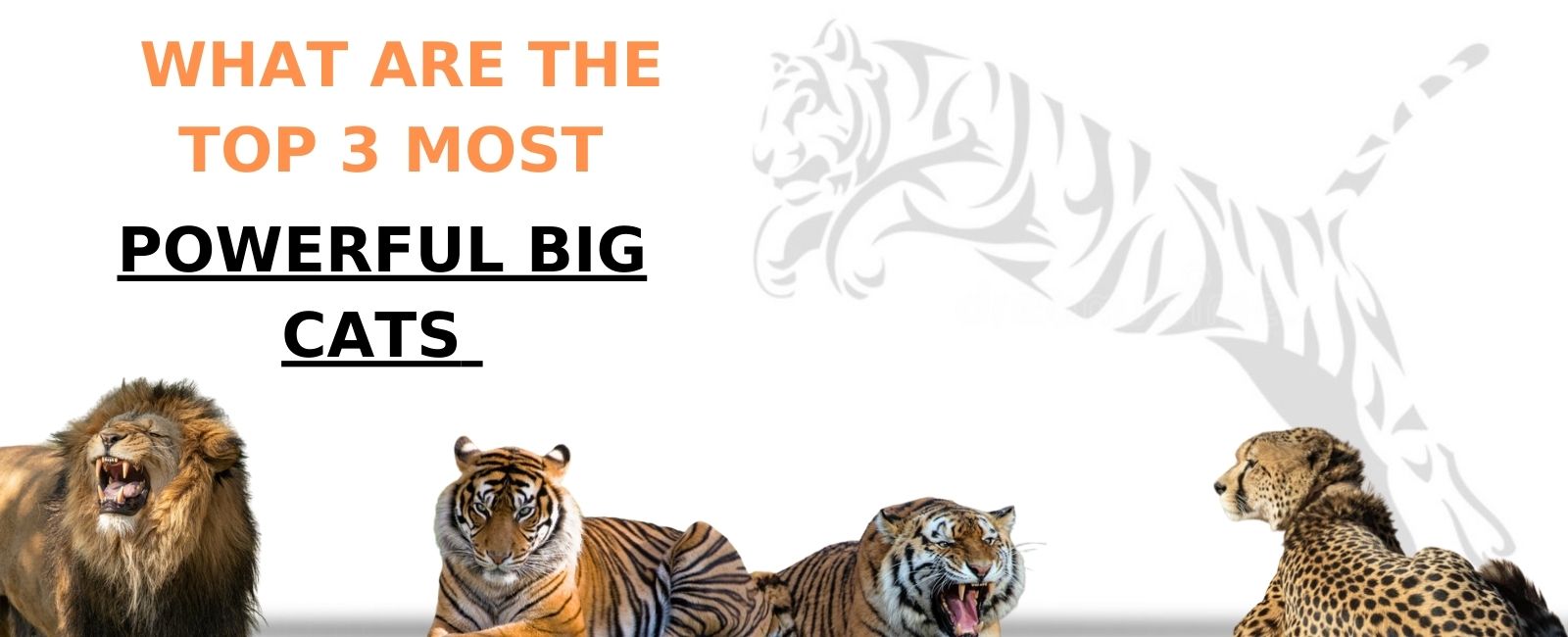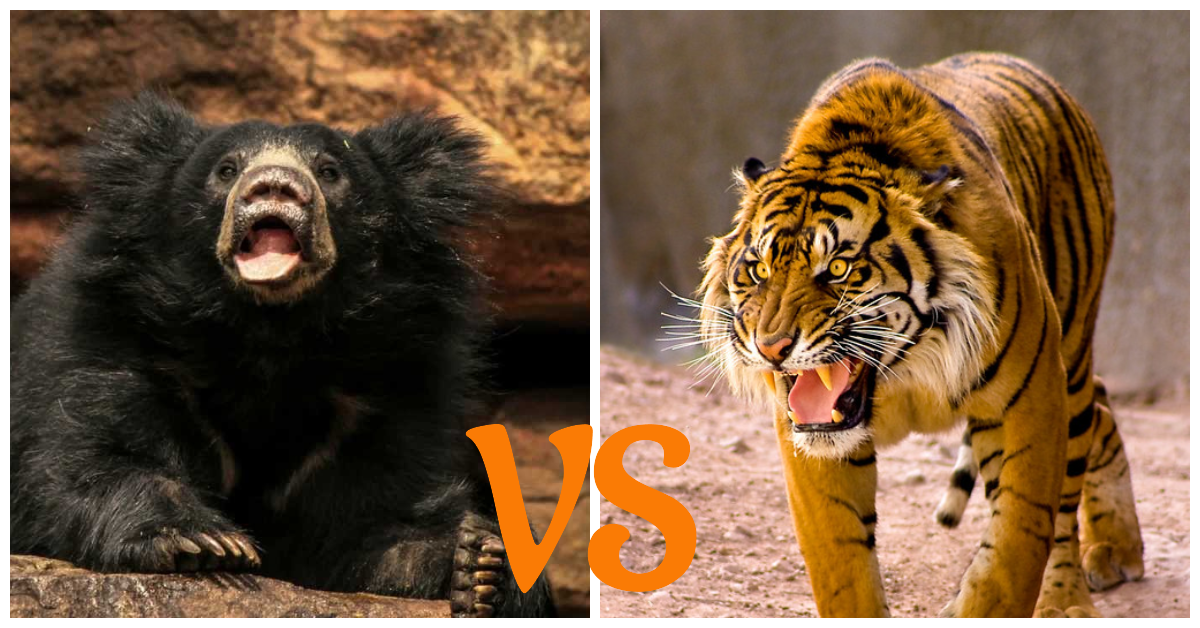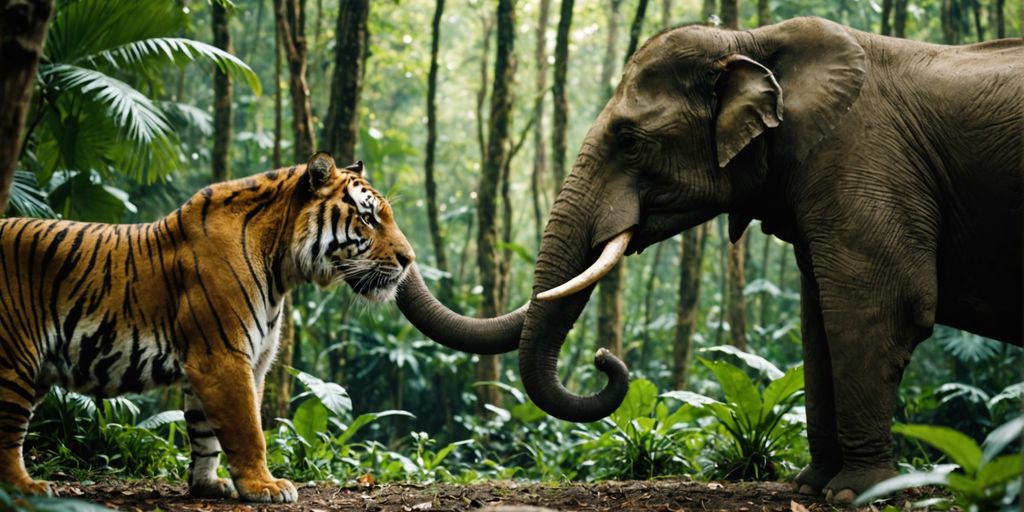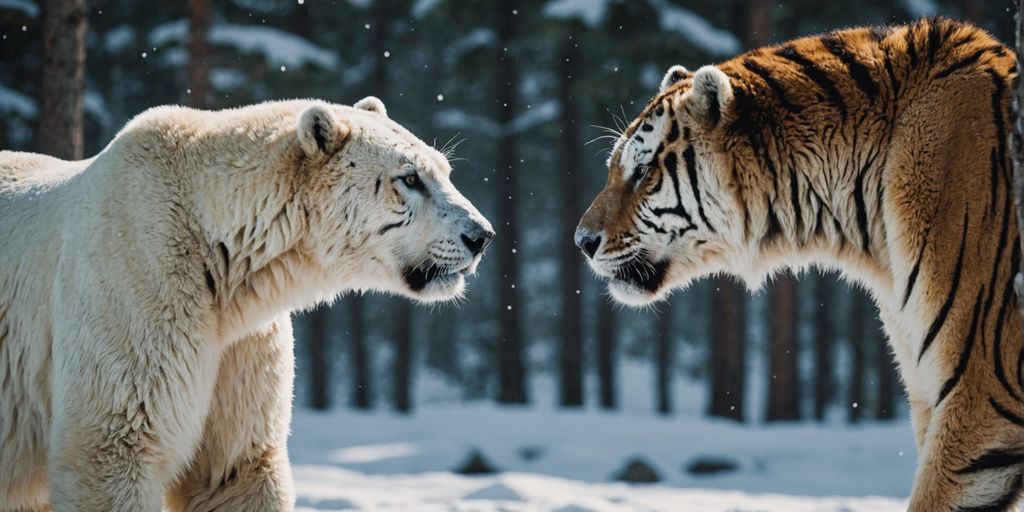Your Cart is Empty
🙏HELP US SAVE TIGERS!🐅 WE DONATE 1% OF OUR SALES TO WILDLIFE ORGANIZATIONS ( WWF ...)
Menu

🙏HELP US SAVE TIGERS!🐅 WE DONATE 1% OF OUR SALES TO WILDLIFE ORGANIZATIONS ( WWF ...)
What are the top 3 most powerful big cats?
June 01, 2022 5 min read

The Power and Majesty of Big Cats
There are more types of cats in the world than you might think. While most people are familiar with the common house cat or its wild cousin, the tiger, the feline family is far more diverse. From stealthy jungle dwellers to savannah sprinters, cats come in all shapes and sizes each uniquely adapted to thrive in its environment.
Some are small and agile, able to catch mice and birds with lightning speed. Others possess powerful hind legs, giving them the strength to leap great distances or climb trees to escape danger or scout prey.
In this article, we’ll shine a spotlight on the top three most powerful big cats. But first, let’s explore what actually defines a "big cat."
What Is a Big Cat?
"Big cats" is a term generally used to describe the largest members of the feline family those that are significantly bigger than your average domestic cat and capable of taking down large prey such as deer, goats, or even buffalo.
These cats are characterized by:
- A broader skull and shorter muzzle compared to smaller felines
- Greater muscle mass and strength
- Predatory dominance in their ecosystems
While there are many species in the wild feline kingdom, only a handful are officially considered “big cats.” For the purpose of this article, we’re focusing on three of the most powerful:
- Lions
- Tigers
- Cheetahs
It's important to note that this list includes only extant (currently living) big cats no extinct species or mythical creatures. With that said, let’s dive into the rankings.
The Strongest Big Cats Ranked
Big cats are among the most formidable predators on Earth, but not all are created equal when it comes to sheer strength and power. In the next section, we’ll rank the top three based on their physical capabilities, hunting prowess, and dominance in the wild.
Ready to meet the kings and queens of the feline world? Let’s go.
Panthera Leo (lion)

The king of all big cats is also one of the largest felin in existence. The lion is a highly social animal that lives in groups known as prides. This big cat can be found across southern and eastern Africa, but its range once included Europe and Asia. Males are typically heavier than females, weighing up to 500 pounds (225 kilograms).
Females weigh up to 300 pounds (136 kilograms). Lions hunt alone or with pride members in pursuit of antelope, zebras, wildebeest and other large animals for food. Males defend their territory from other male lions, but females generally do not leave home except to breed.
Lions: The King of the Jungle
Lions are the most well-known big cats, often seen as the King of the Jungle. They are named after their mane which is used to show strength. Lions can be found in certain parts of Africa, India, and the Middle East. Lions are social animals and live in groups called prides, which can have up to 30 members. Lionesses in the group are the ones who take care of the cubs and hunt for the group, while the males stay behind and guard the pride.
A pride of lions is led by a dominant pair, who are usually the ones to breed. The female is the one who does the hunting in the pride, but occasionally the males may help as well. Lionesses use their strength, agility, and intelligence to hunt their prey. They often go for smaller or injured animals, like zebras or wildebeests.
Panthera Tigris (tiger)

The Bengal tiger is a pantherine species native to parts of Asia. Their habitat ranges from India and Nepal in South Asia, across southeast Asia to Indonesia, Malaysia, Burma, Thailand, Laos and Cambodia. Tigers live in a wide range of habitats and altitudes but they require sufficient prey density and large home ranges.
Over much of their range they are endangered due to human activity while in some countries like India their numbers have increased after major conservation efforts from local people.
Tigers are apex predators; meaning that they occupy an ecological niche at the top of their food chain and direct important functions in nature by eating only herbivores such as deer, bovids and wild pigs. Although large, males remain solitary except for breeding attempts which tend to be unsuccessful because of low female populations (only two percent), high infant mortality rates (40 percent) and multiple paternity issues with litter mates killing each other's cubs (about 30 percent).
So despite being ferocious hunters with no natural enemies aside from humans it's not easy for them to find mates when there aren't enough tigers out there.
Tigers: The Ultimate Hunters
Tigers are the largest and most powerful of all cats, and some of the most powerful mammals in the world. They are found in parts of Asia, especially in the southern and eastern parts of the continent. There are many different subspecies of tigers, each with special adaptations to allow them to live in the different environments they inhabit. Tigers have a large range of prey, and hunt numerous species of animals from fish to deer.
They use their agility, speed, and strength to catch their prey. One of the most interesting things about tigers is that they are able to climb trees, something no other big cat can do. Tigers have strong teeth and claws that make them excellent hunters. They are also able to run at high speeds for long distances, which is used to catch their prey.
Acinonyx Jubatus (cheetah)

The fastest land animal in history, cheetahs can reach speeds of 70 mph (112 kph). That speed comes at a cost, though. Cheetahs are extremely fragile and easily injured. Furthermore, their high metabolism requires them to eat as much as 20 pounds (9 kg) of meat daily.
To put that in perspective, only one wild cheetah has ever been documented eating that much food over such a short period of time—and it died shortly after. For these reasons, among others, it's unlikely that we'll ever see cheetahs competing at the Olympics or serving on SWAT teams around the world.
With all those limitations, it might seem that acinonyx jubatus isn't as formidable as other big cats out there; but what makes cheetahs unique is how well they're able to exploit their strengths by working together. Working collectively, there are very little predators can do to stop them from hunting down prey. If there were an Olympiad for teamwork, these guys would be gold medalists for sure!
Summing up
As you can see, lions, tigers, and cougars are the three most powerful big cats in the world. Lions are the kings of the jungle and the most well-known big cats, while tigers are the ultimate hunters and the largest of all cats. Cheetahs are the masters of concealment and the largest of the smaller cats. These powerful felines are all well-known for their strength and agility.
Also in Tiger Blog

Sloth Bear vs Tiger: Who Would Win?
July 13, 2024 7 min read
Explore the thrilling showdown between a sloth bear and a tiger, analyzing their strengths, behaviors, and survival tactics.
Read More
Tiger vs Elephant: Who Reigns Supreme in the Animal Kingdom?
July 13, 2024 7 min read
Explore why elephants usually triumph over tigers in the wild, highlighting their size, strength, and defensive prowess.
Read More
Epic Battle: Polar Bear vs Tiger, who win?
July 11, 2024 8 min read
Epic showdown: Polar Bear vs Tiger. Discover who would win in this thrilling battle of nature's fiercest predators.
Read More